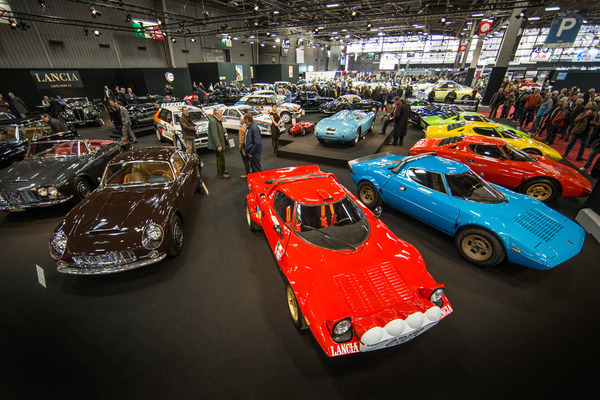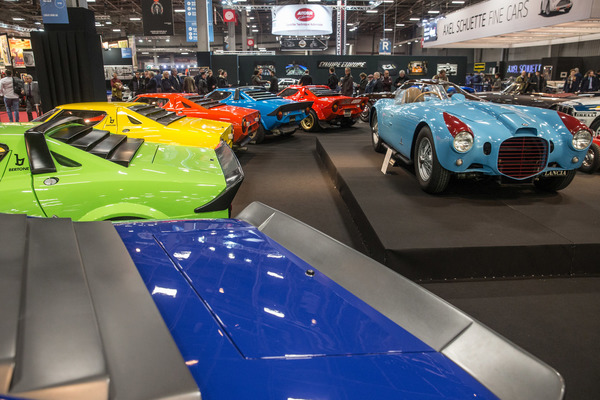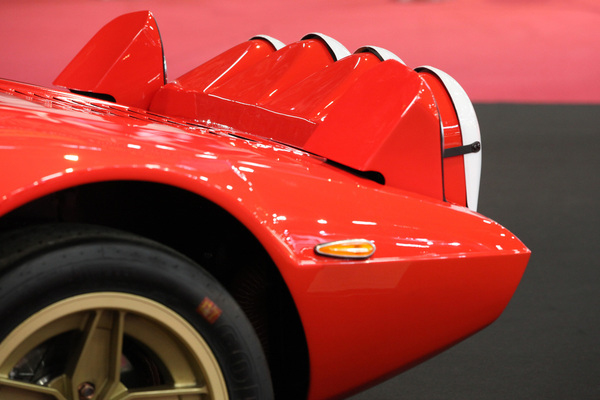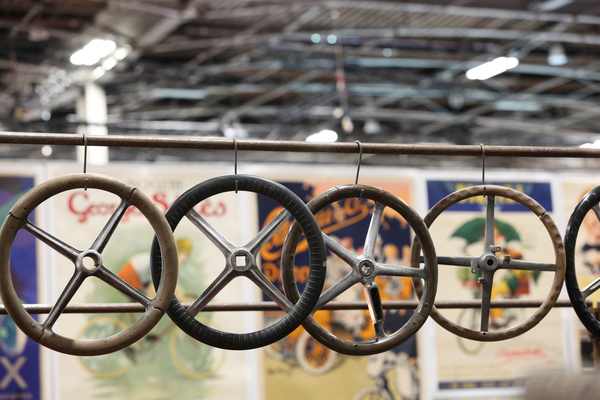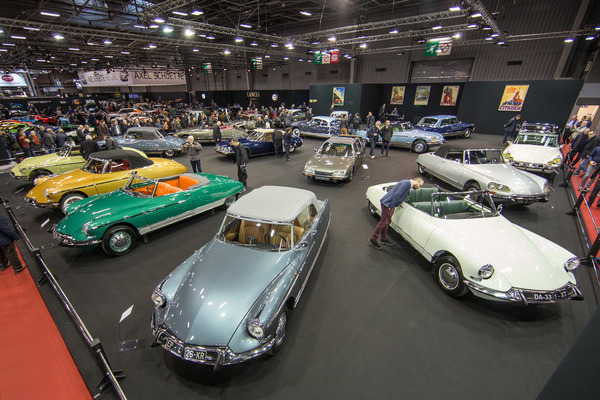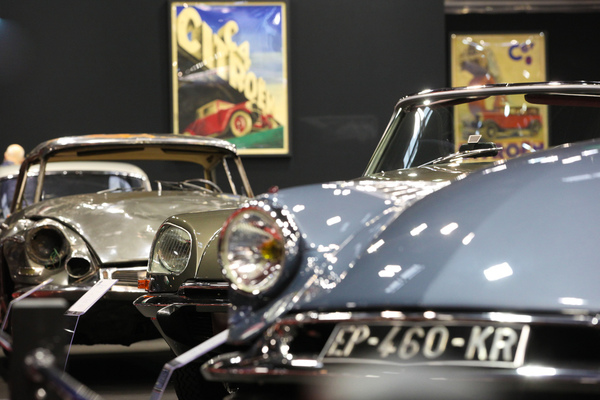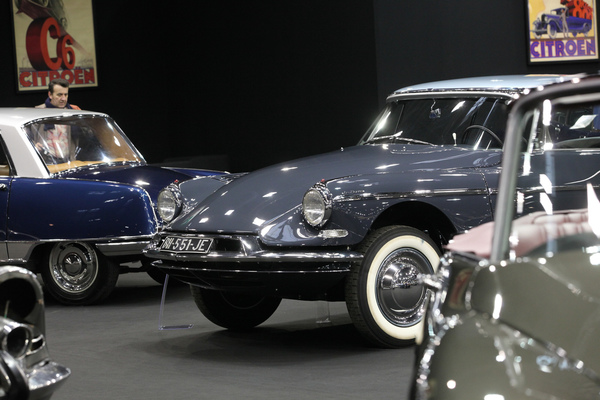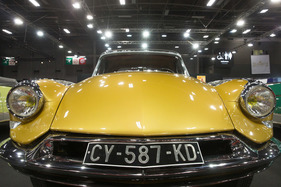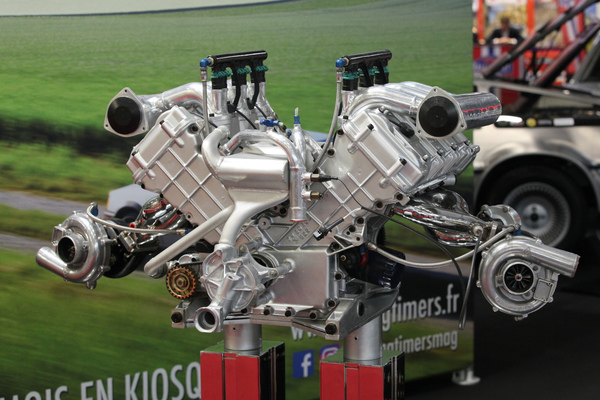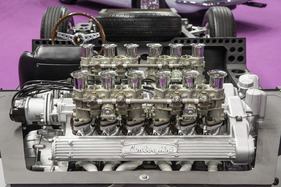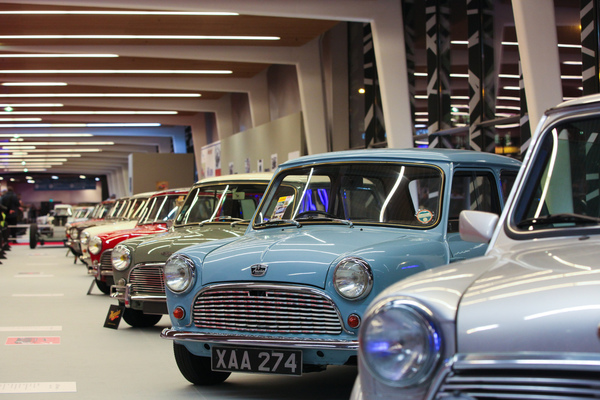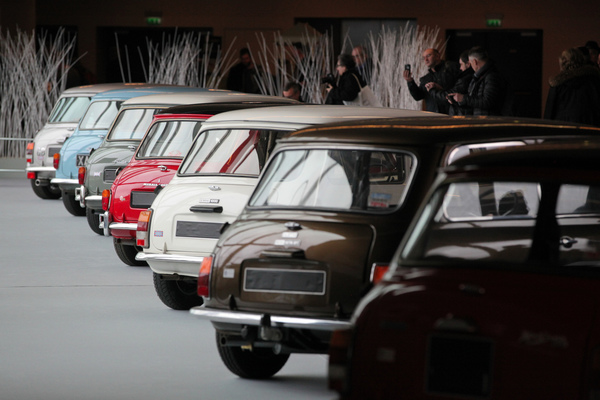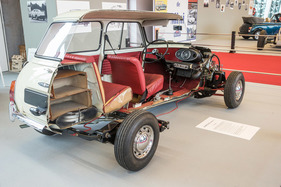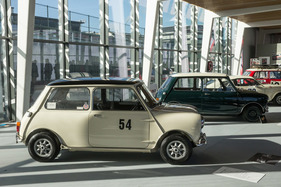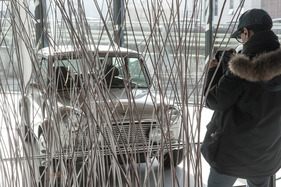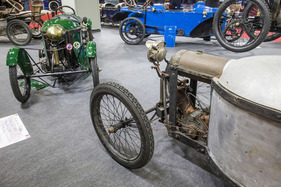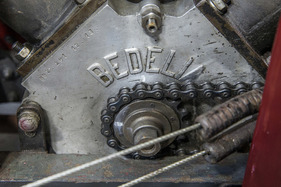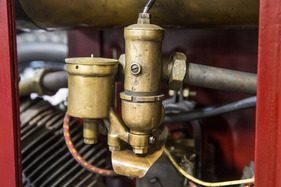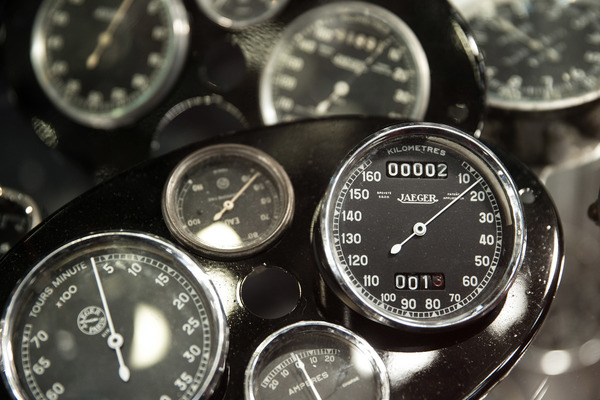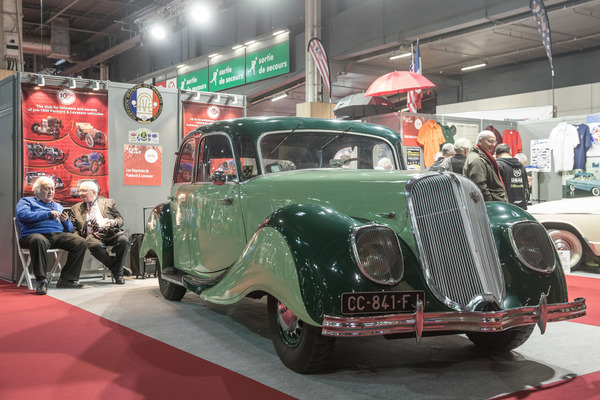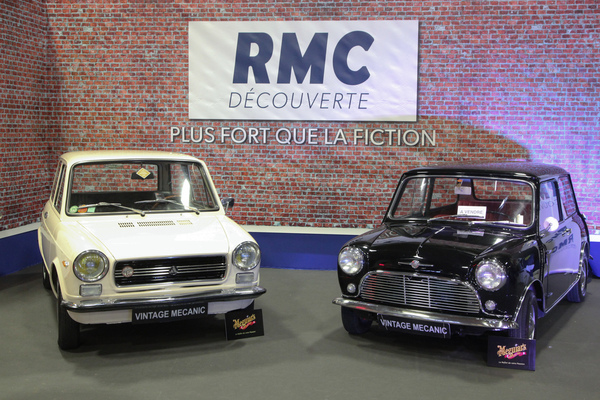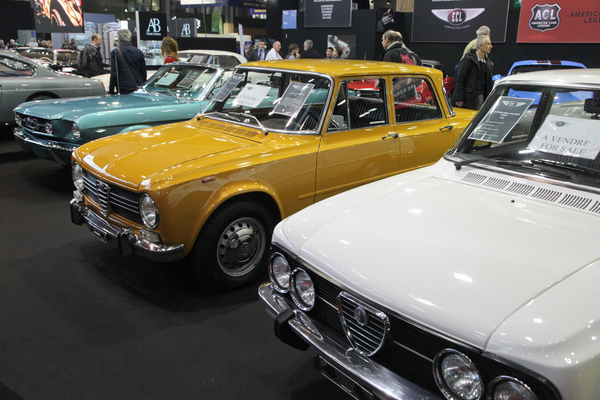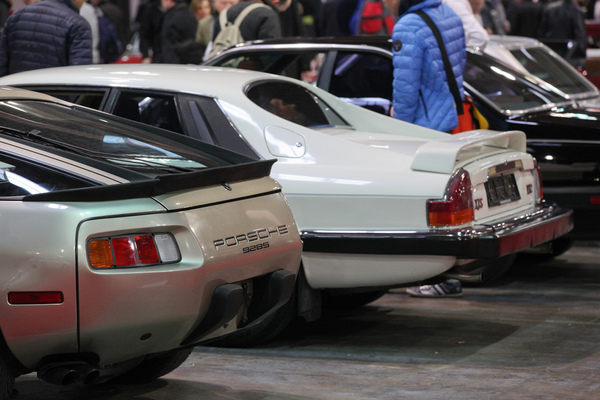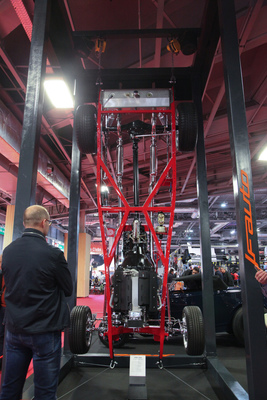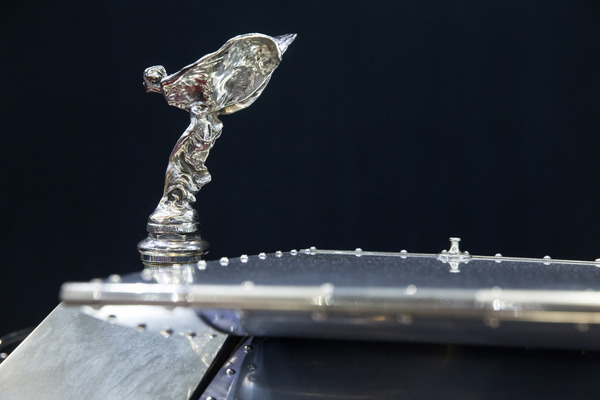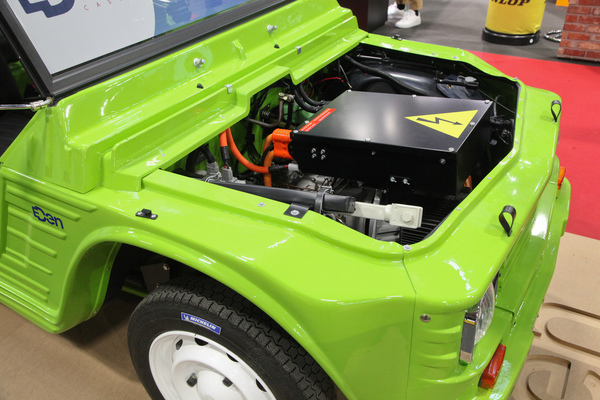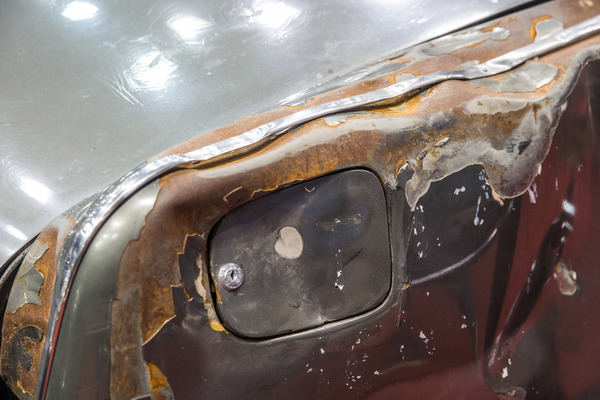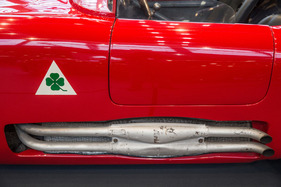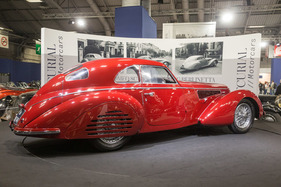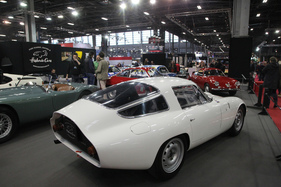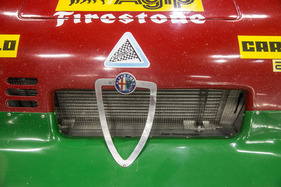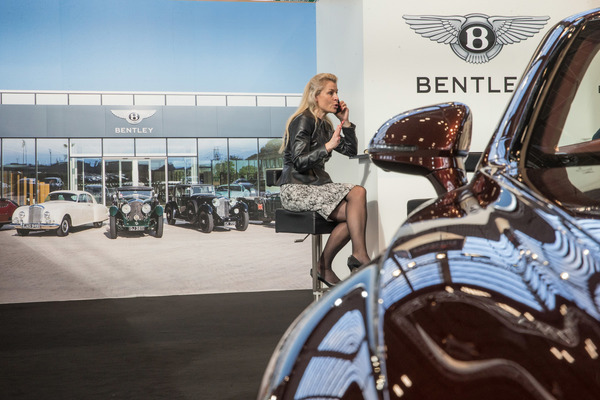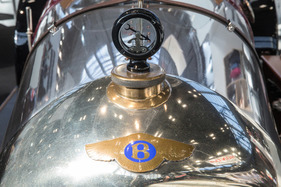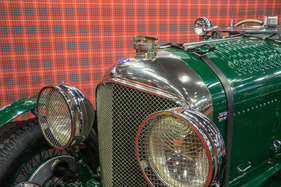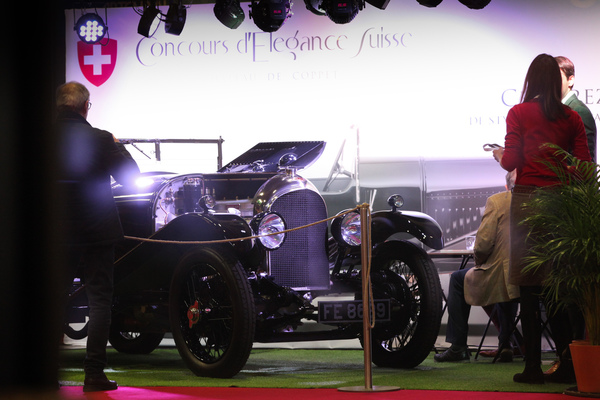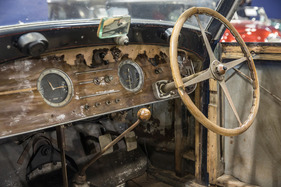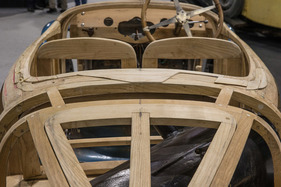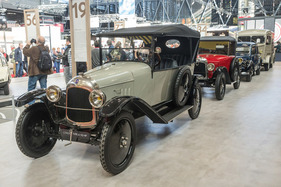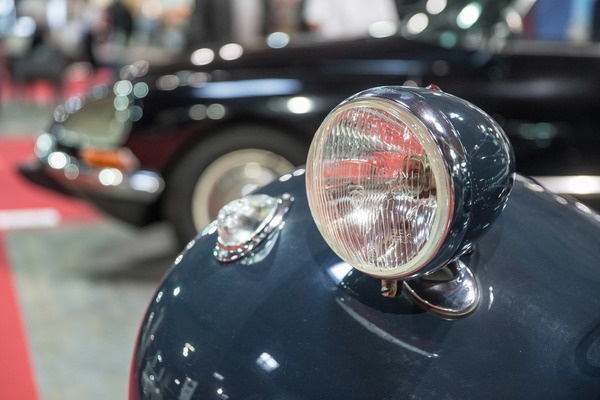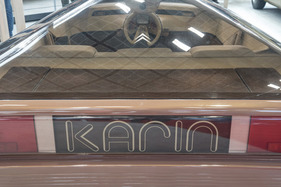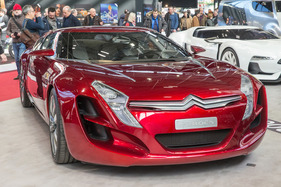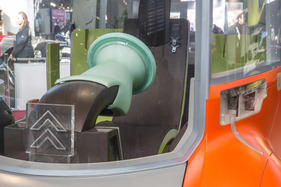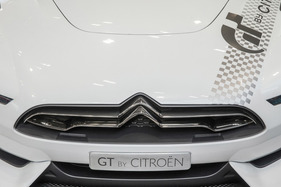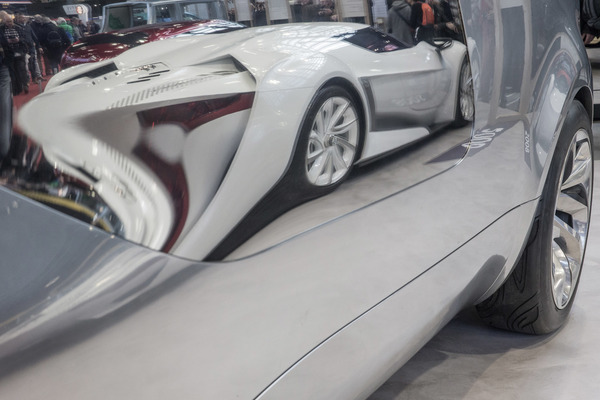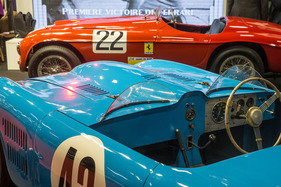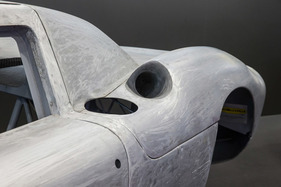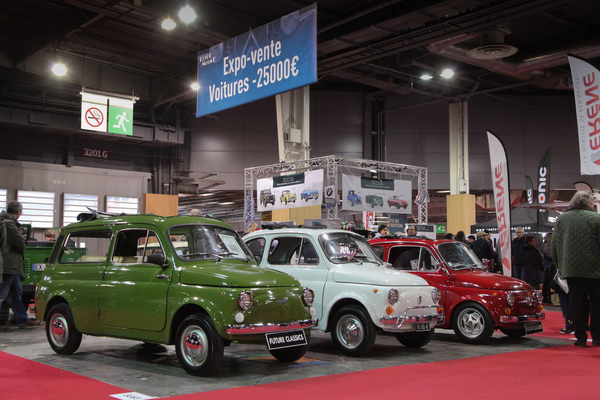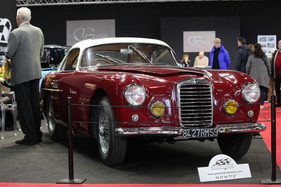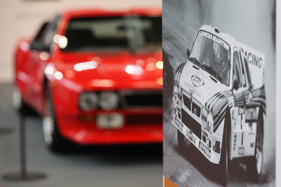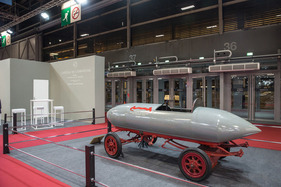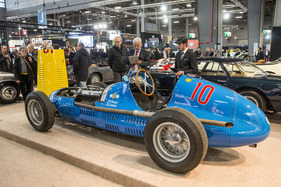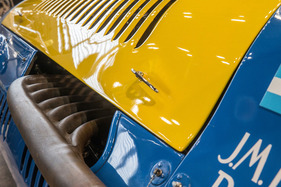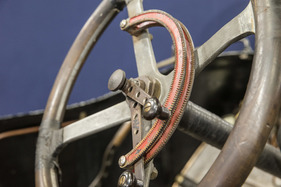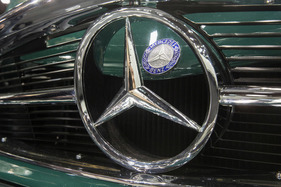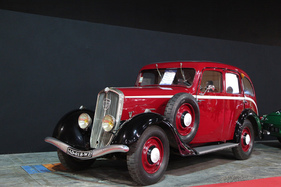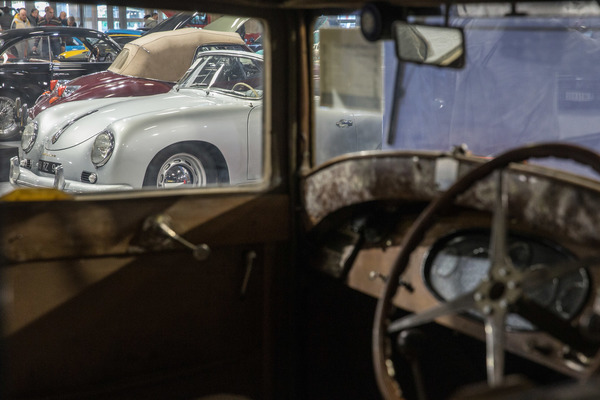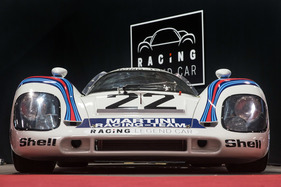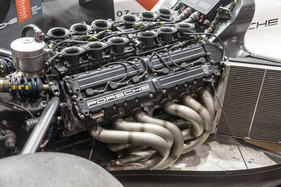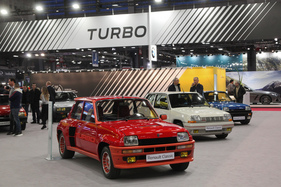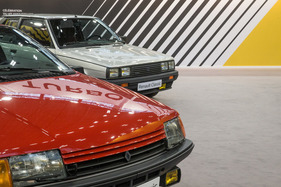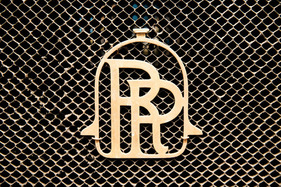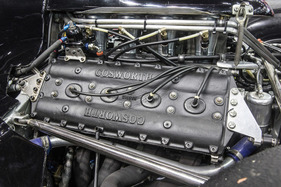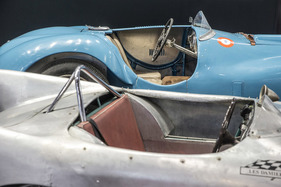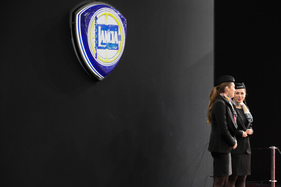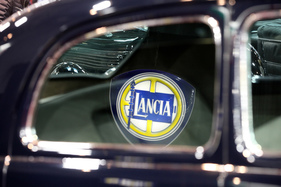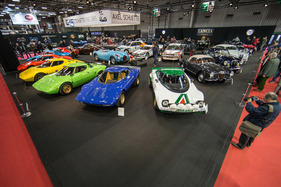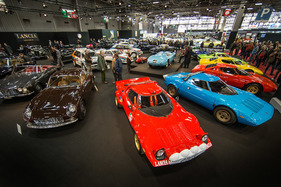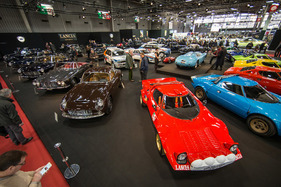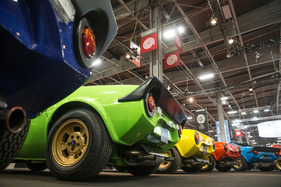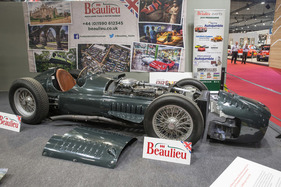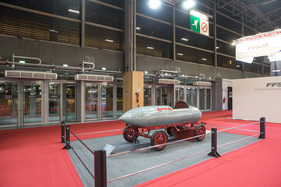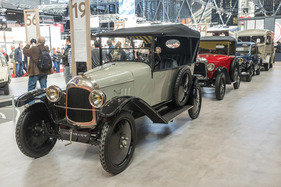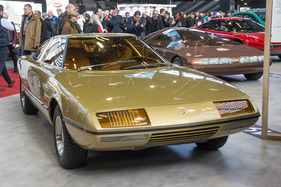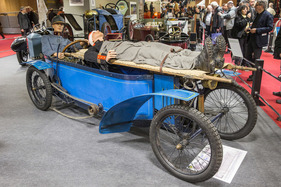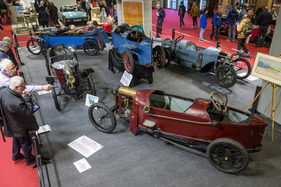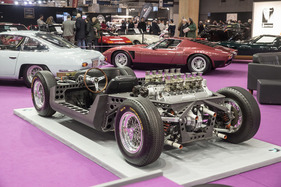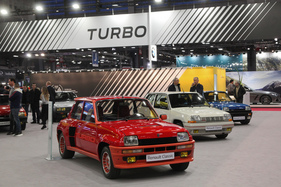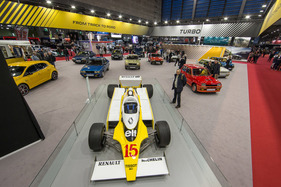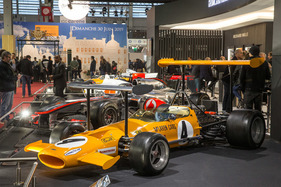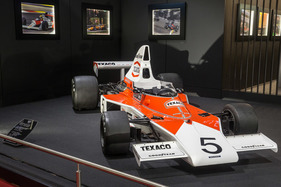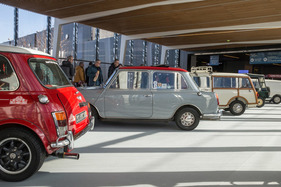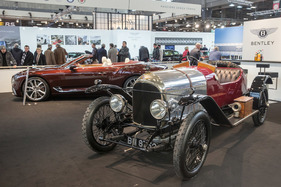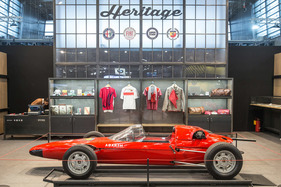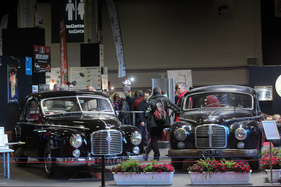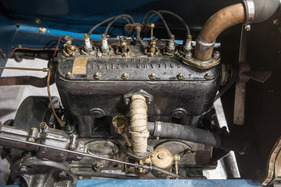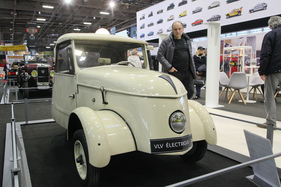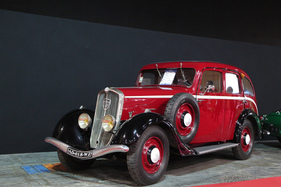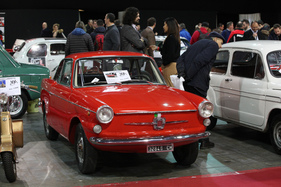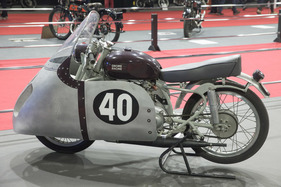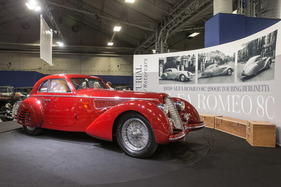Every year, visitors to the Rétromobile in Paris ask themselves whether it is possible to surpass what they have already seen. Last year, for example, there were almost a dozen Ferrari 250 GT SWBs on display, a real superlative.

But after just a few meters in the halls at the Porte de Versailles between 6 and 10 February 2019, it was clear that the 2019 edition of the Rétromobile was not lacking in highlights either.
Unbroken enthusiasm
The rush of visitors hardly seemed any less than in other years, the queues at the entrance were long as usual, as was the waiting time at the food stands as soon as lunchtime approached. And although there were more food stands, it didn't seem any easier to get a coffee or a sandwich.

There was a lot of crowding between the stands, and sometimes you had to be patient to get a clear view of the exhibits. The 132,000 visitors reported by the organization, a new record, were therefore quite understandable.
Superlatives non-stop
There was no shortage of superlatives of a special kind at the Rétromobile in 2019. For example, the monstrously large Berliet T100 truck could be seen from afar. The colossus, of which only two of the four examples built have survived, is five meters high, five meters wide and 15 meters long. It was powered by a 30-liter V12 diesel engine with around 600 to 700 hp. This enabled it to transport 60 tons through the dunes of the Sahara. No wonder this monster was the ideal backdrop for selfies of all kinds.
Another superlative brought to Paris by the National Motor Museum from Beaulieu was much more delicate. Although the BRM Type 15 from 1950 only had a displacement of 1.5 liters, it was distributed over 16 cylinders and was supposed to be good for 500 hp at 12,000 rpm thanks to supercharger assistance. It didn't turn out to be quite that much and the complex racing car didn't achieve racing success, but it remained a technical marvel.
The Jamais Contente from 1899 was completely different. It used an electric motor and was capable of reaching an impressive 105 km/h at the turn of the century. To achieve this, it was designed to be as aerodynamic as possible.
For Citroën's birthday
Aerodynamics has always been important for the Citroën brand, which is celebrating its 100th birthday in 2019.
It was on June 4, 1919, when the first Citroën 10 HP Type A left the production halls on the Quai de Javel in Paris. Since then, some Citroën designs have caused a stir or even a shake of the head. Not all of the French brand's cars were successful, but many of them were unmistakable.

This was also evident at the Rétromobile in the concept cars on display, which left nothing to be desired in terms of their richness of form.
Not only Citroën itself celebrated its 100th birthday, a special show with Chapron variants also celebrated the brand.

The wealth of colors and variants on display here in the form of special bodies was certainly one of the superlatives that will be remembered for years to come.
Lancia panopticon
Speaking of a wealth of colors. Lukas Hüni was also able to keep up with his Lancia line-up. In the front row were seven Lancia Stratos in all the colors of the rainbow. They almost drew attention away from the hardly less attractive Lancia models from the pre-war and post-war decades.
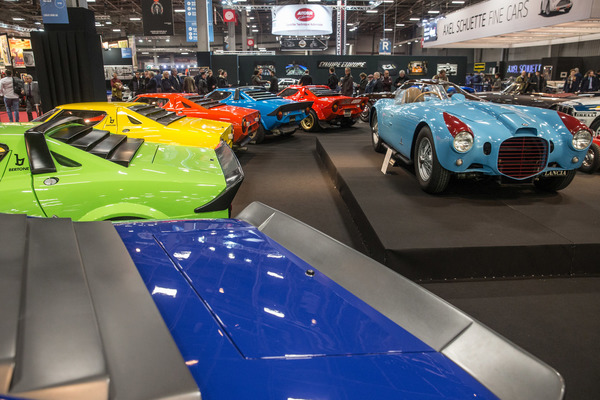
And even the Louwman Museum's D23 or the rally Martini versions of the 037 and Delta Integrale seemed almost inconspicuous compared to the Bertone wedge sports cars of the 1970s.

Hüni had brought together around two dozen exquisite Lancia milestones to celebrate the brand, which is officially dying out. He deserves our thanks.
An ode to Bédélia
The French manufacturer Bédélia has long been one of the forgotten brands. The first four-wheeled vehicles were created in 1910, when Robert Bourdeau and Henri Devaux smashed their motorcycle in an accident. In response, they built a car that was mainly based on motorcycle parts, but was surprisingly fast thanks to its low weight and could carry two people.
It was unusual for the crew to sit one behind the other, but even more special was that the pilot sat in the back and the passenger in the front ... or lay down, as the Bédélia Cycle Cars were also used as ambulances.
14 of the 18 surviving Bédelia models were on display in Paris, 3000 were built at the time. The designs were fascinating, but not all of the two-seaters on display appeared to be in a drivable condition. Nevertheless, some of them will be back on the Montlhéry racetrack in May.
Lamborghini Miura in multipack
For many, the Miura is the very first super sports car. When it was presented in the 1960s, rival models from Ferrari and Maserati suddenly looked outdated and old-fashioned. With its transverse V12 mid-engine and breathtaking design by Marcello Gandini, the Miura set new standards.
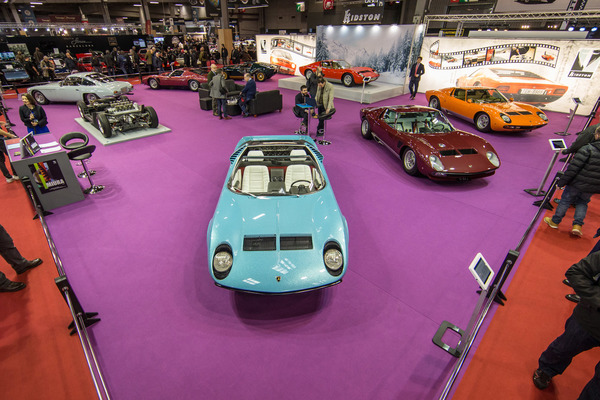
Simon Kidston did the same, displaying six of these rarities on his stand. These were mainly special examples, i.e. SV and SVJ variants as well as the unique Spider, which made its debut in Brussels in 1969. And the icing on the cake was the chassis that was first shown in Turin in 1965.
Incidentally, the Lamborghini Polo Historico also showed another Lamborghini P400 SV that had just been restored, so Miura fans were in for a real treat.
Turbo, Turbo
Renault is regarded as the pioneer of turbo technology in Formula 1 racing cars. It therefore made sense to equip production vehicles with this performance-enhancing option, and Renault did so across almost all model series.
Some examples of these upgrading efforts at the time were on display in Paris, for example in the form of a Renault 5 Turbo from 1982 (with mid-engine), a Renault 5 Alpine Turbo, a Renault Fuego or a Renault 18.
And of course the Formula 1 version was not missing.
50 years of McLaren
Formula 1 technology was also on display at the Richard Mille stand. There you could admire McLaren Formula 1 racing cars from five decades. The M7C from 1969 with its huge, high-mounted wings was of course particularly impressive.
Because these aerodynamic aids led to many accidents, the wings of the F1 racers were trimmed and the result looked something like the M14 from 1970.
One of the McLaren racing team's most successful cars was the M23, with which Emerson Fittipaldi became world champion and which also helped James Hunt to victory.

In the modern era and with TAG Porsche engines, it was other models that helped McLaren to victory.
Minis big time
Probably the largest special show in terms of numbers was dedicated to the 60th anniversary of the Mini. Not only were over two dozen derivatives of the original Mini on display, but also the conceptual origins, which were already on show at the Paris Motor Show in 1947 as a chassis design by Charles Dechaux.

Alec Issignois had probably also copied from there and generated his idea of the transverse four-cylinder engine and the wheels mounted far to the outside. However, it was not until 1959 that the first Mini was shown in public.
And in the beginning, the car did not seem to be the success that was hoped for, as it was too expensive. But these problems disappeared as the Mini became more versatile, faster, more colorful and more lively. Rally winners, leisure car variants, luxury versions and constant model upgrades turned the original Austin Seven and Morris Mini Minor into a million-dollar success.
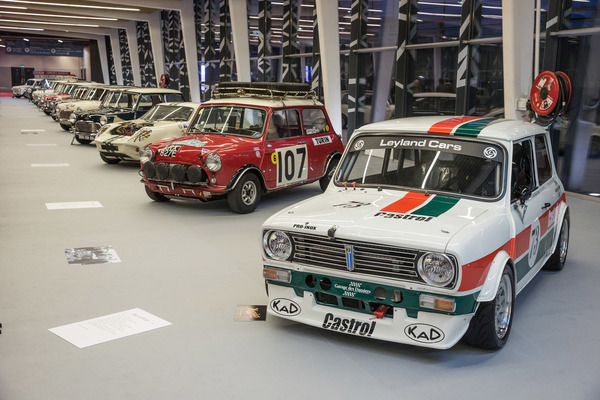
And it was fun to be able to admire the many different versions in the special show in rank and file. In particular, the notchback version, which was marketed as the Wolseley Hornet, was probably only remembered by very few, while a Mini Moke, for example, could even be seen on the wintry roads outside the halls.
The broad appearance of the Mini phalanx somewhat disguised the fact that the British were actually quite thin on the ground in Paris. Although a few Bentley, Aston Martin and Jaguar (and Range Rover) were to be seen, most of the smaller British brands such as Jensen, TVR and Ginetta were largely conspicuous by their absence.
Even more popular brands such as MG, Triumph or Austin-Healey were at most seen in private sales or at dealerships.
Brand presence
As a result, Bentley's 100th birthday almost went unnoticed. A special show would certainly have been interesting here, but as it was, you could only see one old Bentley at the factory stand, with others scattered around the fair. Almost all of Bentley's work between 1935 and today was completely missing.
The French brands were of course more widely represented, with Peugeot taking up a considerable amount of exhibition space alongside the aforementioned Citroën and Renault.
Of the foreign brands, the Fiat Alfa-Abarth Group and BMW had larger stands, while Honda presented a motorcycle (for the 50th anniversary of the Honda Four) and an S2000 (for its 20th birthday).
Art and technology
Typical of the Rétromobile was, as always, the artists' village, which this time even made it to the front of the large hall.
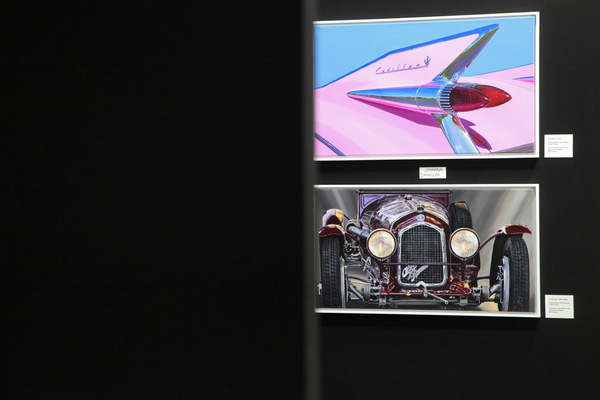
A wide variety of artworks depicting cars or at least inspired by cars were on display here, if not using a transformed car as part of the artwork.
PRV engine celebrates its birthday
The joint V6 engine from Peugeot, Renault and Volvo was created 45 years ago. Originally designed as an eight-cylinder engine, rising petrol prices forced downsizing, which led to the cutting of two cylinder units. What remained was the typical V8 cylinder angle of 90 degrees and the modern design with two overhead camshafts.

The engine was used in the Renault 30, the Peugeot 604 and the Volvo 780, among others, but also in the De Lorean DMC-12, in various Venture sports cars and in the Alpine-Renault A310 and its successors.

The V6 was even used in racing. It certainly deserved a small special show dedicated to it by Youngtimer magazine.
The clubs with their rarities
Of course, the clubs once again provided some rare exhibits this year.
Where else, if not at the Rétromobile on a club stand, can you see two Hotchkiss Grégoire together or admire a Rolland & Pillain?
Progressive electrification
The fact that even the Rétromobile cannot completely ignore electrification was demonstrated by a number of stands showing either retro sports cars with electric drive or electrified versions of classic cars, e.g. based on the Citroën Méhari, which is certainly suitable for this purpose, as seen at Eden Cassis.
But historic electric cars were also on show, such as the CLV from Peugeot, several hundred of which were built between 1941 and 1945.
Not just very expensive
Although hardly any of the high-end dealers such as Fisken, Girardo, Axel Schütte or Kienle put prices on the fine classic cars, you could work out that in many cases single-digit million sums were not enough.

But there was another way. Rétromobile made a special area available for inexpensive classic cars. The condition was a maximum price of EUR 25,000 and, lo and behold, there were interesting vehicles to admire here too.
From the Citroën C6 F from 1931, to the Peugeot 301 D from 1935, to the Alfa Romeo GTV6, Porsche 928 S or Zimmer Tiffany Golden Spirit, the offer ranged, and the prices were always under EUR 25,000.
A Fiat 500 was available for single-digit thousand sums, for example, and a specially bodied Fiat 600 from Vignale for EUR 18,000. Whether it was a Beetle convertible or an Austin-Healey, collectors looking to buy could find what they were looking for here.
Motorcycles and bicycles
Although the Rétromobile is primarily a four-wheeler trade fair, there were a particularly large number of motorcycles to admire in 2019 thanks to Artcurial. They were mainly from the manufacturer MV Augusta and were auctioned off on Saturday evening.
There was also a special motorcycle show entitled "Gnome et Rhône - une histoire de France", in which some of these rare motorcycles were on display.
Three auctions
Many Rétromobile visitors also looked around for objects of desire at the three car auctions by RM/Sotheby's, Bonhams and Artcurial. Around 400 automobiles were on offer, a good two thirds of which were sold with a total value of over EUR 80 million.
A detailed report on each of the three auctions has already been published on Zwischengas.
Emphasis on French and Italian automotive heritage
What will the average visitor remember after one or more days at the Paris Motor Show?
Certainly Citroën, Lancia and Lamborghini, perhaps Chapron and the elegant Alfa Romeo 8C 2900 Touring Berlinetta, which was auctioned by Artcurial for over EUR 16 million.
All in all, French and Italian cultural assets of the rolling kind, just right for café au lait or cappuccino.





